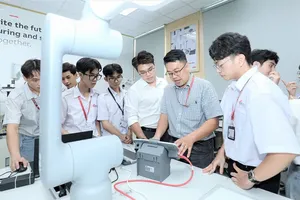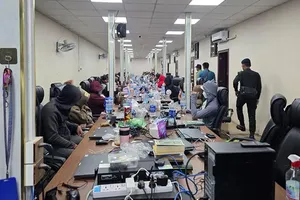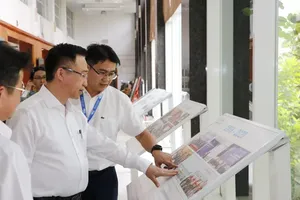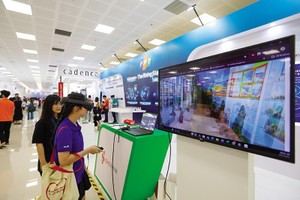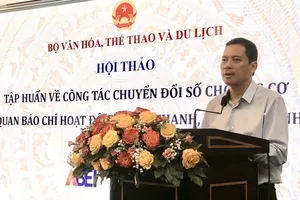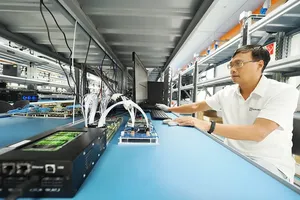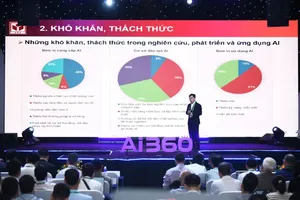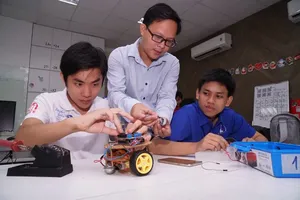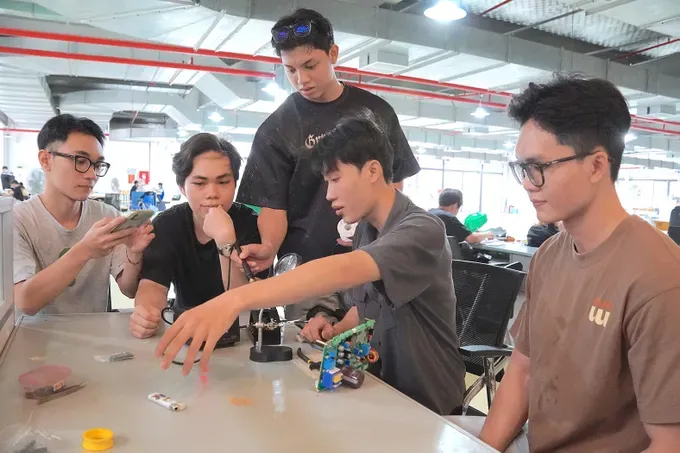
The Center for Innovation, Startup and Technology Transfer (CISAT), part of HCMC University of Technology and Education (HCMUTE), is a sprawling 3,200-square-meter facility. But it’s rarely quiet. It’s perpetually buzzing with student groups in deep, enthusiastic discussion with the university’s top experts, all hashing out production plans for “made in HCMUTE” products.
For Nguyen Ngoc Bao Tram from the Faculty of Chemical and Food Technology, this meant finalizing her team’s project named “A Nutritious Black Garlic and Jackfruit Seed Biscuit, Rich in Antioxidants, with a Low Glycemic Index for Diabetics.” The project aims to create a new line of healthy, functional biscuits. “Thanks to its low glycemic index and healthy ingredients, the product is really designed for those on a diet, especially diabetic patients,” Bao Tram explained.
It’s a similar scene at the University of Information Technology (a member of Vietnam National University-HCMC). Here, innovation and startup activities are reportedly drawing in a crowd of students and lecturers, all working on projects with immediate production potential. Nguyen Doan Hoang Phuc, a student in the Faculty of Computer Engineering, was visibly enthusiastic about his just-completed first project: a RISC-V microcontroller design that integrates hard encryption, a feature specialized for saving energy in IoT systems.
“To get those energy savings, the RISC-V design process requires a lot of complex techniques in the physical design,” Hoang Phuc shared. “I had dedicated guidance from my teachers for the full six months. With this project, I’ve now completed a microcontroller design that’s ready to be sent to a factory for production.”
Over at Nguyen Tat Thanh University, a team led by Pham Tran Minh Thu from the Faculty of Medical Laboratory Engineering is working on “AroTrips.” It’s a travel healthcare kit based on white turmeric. The project is all about leveraging a local medicinal herb, white turmeric, to create health products perfect for tourists, combining its natural anti-inflammatory, antibacterial, and skin-regenerating properties.
According to Acting Deputy Director Le Tan Cuong of CISAT, for these student projects to actually become market-ready products, they desperately need support and partnership from the business community. It’s reported that HCMUTE is already cooperating with thousands of enterprises, with CISAT acting as the crucial bridge between academic research and real-world production. The center is also rolling out its own applied research models, all aimed at accelerating the commercialization of these tech products.
“A sustainable startup ecosystem can’t just be built on the enthusiasm and ideas of teachers and students. It needs three core pillars of institutions, capital, and human resources. These three factors must be tightly linked and creatively applied to generate real momentum. The city needs to keep innovating its science and technology (S&T) management, making it more flexible, transparent, and autonomous. This includes forming strong, multi-disciplinary public S&T organizations to act as the nucleus connecting the State, businesses, and schools.”
Vice Chairman Tran Anh Tuan of the HCMC Vocational Education Association
A clear illustration is the “MakerSpace”, a creative space for incubation, kitted out with modern equipment like CNC cutters. Acting Deputy Director Le Tan Cuong emphasized that products developed here ensure quality, applicability, and real commercial potential, not just academic requirements.
At the University of Economics HCMC (UEH), a similar story unfolds. In 2024, UEH successfully incubated over 30 startup projects, running training and connecting students with businesses. Assoc Prof Phan Thi Bich Nguyet of UEH said the school partners with major corporations, developing successful green tech projects. “For student startups to truly make it, we have to scale up these startup centers and incubators. They are the ‘midwives’ for creative ideas,” she stressed.
Some business commented that the journey from a lab to actual production is a long one. It demands persistence from the “young bosses” and a robust support system. Many businesses, they say, are ready and willing to contribute capital and partner with students. However, these young entrepreneurs must equip themselves with skills beyond their technical expertise, especially operational and management skills, if they want to launch effectively.
Statistics from the Ministry of Education and Training reveal that in the 2020-2024 period, students nationwide implemented over 42,500 startup ideas and projects within the framework of competitions and support programs. Among these, nearly 300 student enterprise projects were incubated, and 12 enterprises successfully called for investment capital. Currently, about 60 percent of higher education institutions have established startup clubs in priority fields, based on the strengths of each school.

